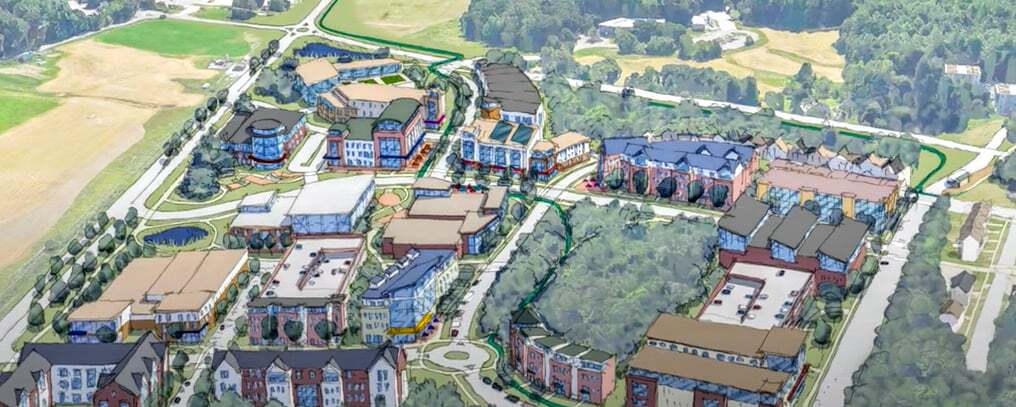The University of New Hampshire (UNH) continues to be one of the 130 colleges meeting R1 standards, a recognition given to universities with very high research activity. Awarded in 2019, UNH since has had no plans of slowing down.
Just a year prior to reaching tier one, in 2018, UNH began developing The Edge, an innovation ecosystem that is expected to provide housing, dining, recreation and more to the UNH community. But the COVID-19 pandemic put an end to the school’s original plans.
The Edge was reintroduced in early 2023 at the state of the university address, this time with a clearer vision. It is expected to be a 500,000 square-foot complex dedicated to research, located where UNH’s West Edge parking lot currently is. A mockup in a video published by the university illustrates the projected structural changes to take place following its start.
Many partnerships have already expressed their interest in The Edge, such as IXBlue, a company that currently is run out of UNH’s John Olson Advanced Manufacturing Center.
In addition to private partnerships sponsoring their own spots in the complex, the National Oceanic and Atmospheric Administration (NOAA) announced the creation of a new Center of Excellence for Operational Ocean and Great Lakes Mapping at UNH. NOAA’s award includes $20 million to be allocated over the next three years, according to Robbin Ray, UNH’s director of media relations.
“With the Board of Trustees’ approval, we intend to build this facility on the west edge of campus and envision the Center becoming the first building in the eventual district,” said Ray.
Generally, UNH is exempt from developmental review for most of their projects because the state is exempt from local ordinances. However, The Edge will be offering far more than just educational use, which means Durham will be reviewing zoning and working closely with the university to meet both parties’ needs.
It is important to note, however, that this is a 15-to-20-plus year project, so changes for both UNH and Durham residents won’t be seen for some time.
“We’re confident that by positioning the district on the west edge of campus, with easy access to Route 4, that we can minimize some of the impact of the development and operation on town residents,” Ray said.
Michael Behrendt, Durham’s town planner, is very pleased with the potential of The Edge.
“What’s good for the university is good for the town,” said Behrendt.
Behrendt explained that a lot of The Edge will be taxable for the community, something that cannot be said about traditional university buildings. There is also opportunity for local businesses to secure a section in the village, making the economic advantages diverse.
Behrendt’s excitement grew as he discussed that it will not just be a center you can drive to; it’s going to be its own street, walkable and eco-friendly.
“It’s not just going to be offices and academics, or high tech stuff, because that’s boring,” said Behrendt. “It’s going to be a lively place.”




















